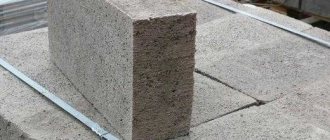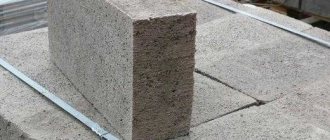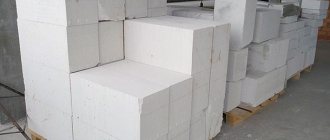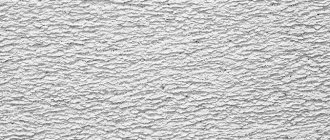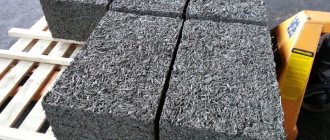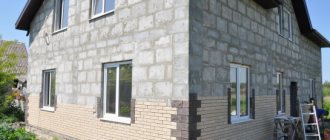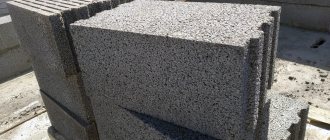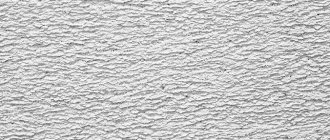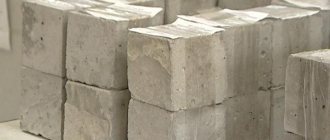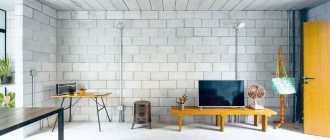A huge number of building materials allows any buyer to purchase something specific, more suitable for a particular case. Sand concrete blocks are especially popular in the construction of private houses and other structures. Like other materials, they have their own advantages and disadvantages. The choice of sand concrete blocks is made taking into account the nuances of construction work and future operation of the facility, and the availability of available funds.
Kinds
Conventionally, sand concrete blocks are divided into several types, differing in their characteristics:
- Foundation or solid block. It has no hollow areas, which is why it is considered quite durable. Used for the construction of foundations. Regular dimensions are 20 x 20 x 40 cm.
- Hollow. It has a certain number of voids - from 2 to 8. They differ in sound insulation and thermal characteristics. The strength is good, but the consumption of raw materials is significantly reduced. The main purpose is for load-bearing walls.
- Facing. It is distinguished by decorativeness on one side and is used for exterior wall decoration. No additional processing required. The main advantages are water permeability, strength indicator, resistance to various temperature conditions.
- Septal. Used for the construction of internal walls, it is smaller in size and has excellent sound insulation. To improve this quality, hollow material is used in combination with such a block.
- Wall. Used for the construction of external internal walls, characterized by increased width.
Positive features and disadvantages
Cement-sand blocks have a number of advantages. Let's characterize the properties:
- Long service life of buildings. The walls are characterized by reduced weight compared to the use of brick, and, therefore, create less force on the base.
- Environmental friendliness. Environmentally friendly raw materials are used in production and there is no negative impact on people.
- Thermal insulation. A comfortable temperature regime is ensured in the room, since the material retains heat in winter and provides cool air in summer.
- Frost resistance. Integrity is maintained during sudden temperature fluctuations.
- Low shrinkage rate.
- Combination with other building materials, including cladding.
- Fire safety.
- Acceptable price. The material is available to a wide range of developers.
- Ease of masonry. Without using professional builders, you can build the building yourself.
- Reducing work time. The increased dimensions allow you to save construction time.
A number of small negative points are fully compensated by the advantages. However, there are disadvantages:
- the need to insulate the walls of objects to preserve the heat of the room;
- heavy weight of solid blocks. Compensated by arranging a solid foundation.
Compound
Classic version of the feedstock:
- cement composition – 1 share;
- sand - 3 shares.
If you use a sand-gravel mixture, the required amount of solution is reduced.
Portland cement can be added as additional components to give the material additional resistance to frost, improve density and ability to resist corrosive formations.
In addition to preparing the solution yourself, it is possible to purchase a prepared sand-cement mixture with large and small fillers. The first option has a high strength index and is used as an independent material. The second type is used for facing work.
Specifications
What are these, sand concrete blocks? To answer this question, you should study their technical parameters:
- resistance to freezing - from 50 to 75 cycles;
- strength indicator – 200 – 500;
- density – 1,300 – 2,200;
- parameters, cm – 20 x 20 – 40 (10 x 20 – 40);
- ability to conduct heat – 0.56 – 1.15;
- moisture absorption – up to 8%.
All characteristics of the elements depend on the type, size, and technological manufacturing features.
The material has good density and is considered reliable. As an addition, sand concrete blocks have the following characteristics:
- ready for use after 50 days;
- setting in three hours;
- the ability to use the solution for two hours;
- material consumption – 1.8 kg per cubic meter.
Making blocks
The production of sand concrete blocks is carried out using volumetric vibrocompression.
Quartz sand used to make the mixture improves the strength of the blocks. To improve the quality of elements, various modifying components are added.
The proper quality of the finished product can only be ensured by industrial production with modern equipment.
The following factors may affect product quality:
- use of raw materials that meet standards;
- strict adherence to the technological process;
- maintaining technology and proportional ratios of components;
- organization of control over the production process.
The market also presents products made by hand in home workshops. Such units should be purchased with the obligatory study of the technological production process and a certificate confirming the quality of the product.
The workshop producing blocks must be equipped with:
- dispenser;
- mixer;
- vibropress;
- forms.
You should not try to save on a building that is planned to be used for a long period.
Making sand concrete blocks involves performing the following steps:
- The necessary components are selected according to the appropriate characteristics.
- The ingredients are dosed and sent to the mixing plant.
- During the vibration process, the mixture should be shaken periodically to ensure its homogeneity.
- Various matrices are used for blocks. With their help, different types of products are produced.
- The mass is transferred into molds made of steel material. Due to its density, it almost does not delaminate.
- To speed up the process, drying is carried out using thermal or infrared installations.
- The blocks are removed from the molds and sent to the warehouse to gain strength.
- Drying continues at room temperature, normal ventilation and sufficient humidity.
- The finished products are stored on pallets and wrapped in film.
Sand cement blocks and their advantages
Sand-cement blocks, due to their technical performance and low price, have become leaders in the building materials market. Technical characteristics and affordable cost make them popular in the construction of private houses, industrial premises, and multi-story structures. In many cases, sand block acts as the main material due to:
- strength and compactness;
- resistance to changes in temperature and humidity;
- fire safety.
After drying, the products are placed on pallets, measuring the finished material in cubic meters. 73 pieces fit in 1 m3.
How sand blocks are made GOST 6133-99
The production process is organized without any particular difficulties:
|
The shape in which sand concrete blocks are pressed makes it possible to obtain solid or hollow (slotted) ones, which have from 2 to 8 slots. The difference is that hollow products are lighter in weight and cost less. The scope of application of different types of blocks is somewhat different. Where there is a large load, solid sand concrete blocks are used.
The price of sand blocks is not high, about 2 times (1 m3) cheaper than gas blocks or foam blocks. You can buy any number of block elements. Our plant sells sand concrete blocks both wholesale and retail. We will help with delivery and unloading to your home. Calculations are carried out by a specialist based on the provided development plan.
Where is sand block used?
Experienced builders have appreciated the benefits of material made using the latest technologies. Sand block price per cubic meter ,
Compressive strength and wear resistance are not inferior to other building materials. Cheap price, high strength. Therefore, it is used for installation of different parts of the building:
- Solid elements are used to make the foundation for one-story buildings, the basement, and the walls;
- Hollow products are used for piers and walls in outbuildings.
| If there is a question about costs using sand block , buy more slotted elements. They are cheaper, but are not inferior in strength to solid ones. A hollow block is even used for a strip foundation, strengthening the base with reinforcement and filling the cracks with a durable concrete mixture. |
If you buy sand blocks
For the foundation, it is necessary to install waterproofing. The only drawback of the material may be its hygroscopicity. Incoming groundwater seeps into basements and basements if technological standards are not followed.
Advantages
Sand-cement block material is widely used in the construction industry due to its special qualities that make it possible to build strong and stable objects, the cost of which will be relatively low. With the use of such building materials, the cost of construction work is halved.
The clear advantages of sand concrete blocks are:
- level of strength - this quality is especially inherent in solid elements that are allowed to be used for arranging foundations;
- service life reaching sixty to one hundred years;
- economic effect - the volume of a block is equal to seven bricks, to build a wall you will need less mortar, labor costs will be reduced;
- hollow blocks are lightweight;
- structures made from this material can be reinforced;
- the object will withstand severe frosts and other negative impacts;
- the biological stability of the blocks places it in group V. The material is perfectly protected from mold and mildew;
- fire resistance - the block does not lose its characteristics within ten hours of exposure to open fire;
- the ability to quickly carry out construction work, no shrinkage;
- reasonable cost of material;
- environmental cleanliness;
- the air in the void areas will be an excellent heat insulator.
Sand block 200x200x400 from the manufacturer in Moscow
| Builders always have the opportunity to speed up the installation of a facility using hand-laid sand blocks produced by our factory. The block parameters allow you to do without technology. By hand, craftsmen quickly assemble the structure of the house’s base, walls and piers. The result is a light and durable building or a powerful fence. Due to the variety of types of material, you can save money by choosing the material you need. For example: for a fence, it is enough to buy hollow sand blocks, and for the partitions of a house - partition sand blocks, also hollow, to save money. If you have any questions, call! |
Flaws
It is quite natural that the material is not considered an ideal option for construction. It has certain restrictions in use, which define the boundaries of application. If you do not take them into account, you will end up with a building of poor quality that will not be in use for long.
So, the negative points are:
- Mass of a solid block. It reaches fourteen to eighteen kilograms, which complicates the work process. There is a need to lay down serious foundations.
- Weak thermal insulation properties. The air holds heat, but the material of the product itself easily releases it; the walls need a serious insulation layer. In such cases, it is necessary to forget about saving money and labor costs.
- A hollow block is not able to withstand heavy loads. Weak strength and the presence of voids do not make it possible to construct buildings exceeding two floors from such blocks.
- Quite often blocks do not have ideal geometric parameters.
- The quality characteristics of the finished material differ among manufacturers.
Areas of application
Cement-sand blocks are used in the construction of buildings of various heights. The maximum possible number of floors is 10.
Cement-sand blocks are suitable for the construction of multi-storey buildings
Application area:
- foundations. Solid arrays can withstand significant loads and will last a long time at the base of the foundation;
- walls. You can install solid and lightly loaded walls;
- cladding The use of a material that does not require plaster reduces construction costs;
- partitions. For these purposes, products with a width of 100 millimeters or solid arrays are used;
- construction of sidewalks and roads. Sand cement is used to make tiles for curbs and sidewalks.
Performance characteristics allow the material to be used in the construction of basement floors, foundations, fences, cellars, garages, industrial and residential facilities.
Reviews from experts
Having studied all the pros and cons, the masters came to clear conclusions. Sand concrete blocks make reliable plinths. The strength of this material is an order of magnitude higher than that of many analogues used for similar work. Construction costs are reduced and the load on the foundation is reduced.
If you use solid blocks to build walls, you will have to install a serious insulation layer. Otherwise, the house will be cold, which will entail costs for heating the premises. In such cases, it is recommended to use hollow sand concrete blocks.
Mostly reviews about this material are positive. The indoor temperature remains comfortable at any time of the year. If you use lined blocks, then finishing the outer sides of the walls will not be required, which will help save money.
